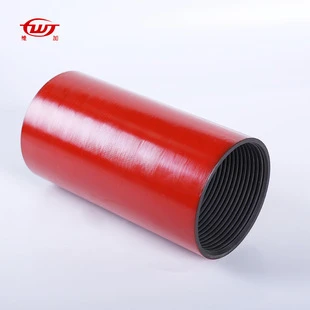- Afrikaans
- Albanian
- Amharic
- Arabic
- Armenian
- Azerbaijani
- Basque
- Belarusian
- Bengali
- Bosnian
- Bulgarian
- Catalan
- Cebuano
- Corsican
- Croatian
- Czech
- Danish
- Dutch
- English
- Esperanto
- Estonian
- Finnish
- French
- Frisian
- Galician
- Georgian
- German
- Greek
- Gujarati
- Haitian Creole
- hausa
- hawaiian
- Hebrew
- Hindi
- Miao
- Hungarian
- Icelandic
- igbo
- Indonesian
- irish
- Italian
- Japanese
- Javanese
- Kannada
- kazakh
- Khmer
- Rwandese
- Korean
- Kurdish
- Kyrgyz
- Lao
- Latin
- Latvian
- Lithuanian
- Luxembourgish
- Macedonian
- Malgashi
- Malay
- Malayalam
- Maltese
- Maori
- Marathi
- Mongolian
- Myanmar
- Nepali
- Norwegian
- Norwegian
- Occitan
- Pashto
- Persian
- Polish
- Portuguese
- Punjabi
- Romanian
- Russian
- Samoan
- Scottish Gaelic
- Serbian
- Sesotho
- Shona
- Sindhi
- Sinhala
- Slovak
- Slovenian
- Somali
- Spanish
- Sundanese
- Swahili
- Swedish
- Tagalog
- Tajik
- Tamil
- Tatar
- Telugu
- Thai
- Turkish
- Turkmen
- Ukrainian
- Urdu
- Uighur
- Uzbek
- Vietnamese
- Welsh
- Bantu
- Yiddish
- Yoruba
- Zulu
pipe bull plug
Understanding Pipe Bull Plugs A Comprehensive Guide
In the field of plumbing and piping, ensuring integrity and preventing leaks is paramount. One essential component that aids in achieving this goal is the pipe bull plug. The importance of this simple yet effective device cannot be overstated, as it plays a crucial role in maintaining the safety and efficiency of various fluid transfer systems. This article will delve into the definition, applications, types, and benefits of pipe bull plugs, providing a clearer understanding of their significance in piping systems.
What is a Pipe Bull Plug?
A pipe bull plug is a type of fitting used to seal the end of a pipe to prevent the escape of fluids or gases. It is designed to create a tight seal, ensuring that no leakage occurs, which is particularly vital in systems that transport hazardous or pressurized substances. Bull plugs are commonly made from materials such as PVC, steel, brass, or stainless steel, depending on the application and environmental conditions.
Applications of Pipe Bull Plugs
Pipe bull plugs are versatile components used across various industries, including
1. Oil and Gas In the oil and gas sector, bull plugs are used to cap off piping sections during maintenance or when a section is temporarily out of service. This prevents the loss of valuable resources and helps maintain safety standards.
2. Water Treatment Water treatment facilities utilize bull plugs to ensure that pipes remain sealed during repairs or inspections. This prevents contamination and manages pressure within the system.
3. Manufacturing Bull plugs are frequently found in industrial manufacturing setups, used in hydraulic systems and pneumatic systems. They help maintain pressure and protect machinery from external factors.
4. Construction During construction projects, bull plugs are essential for capping off pipes temporarily, ensuring that dirt and debris do not enter the system while work is ongoing.
Types of Pipe Bull Plugs
Pipe bull plugs come in various types, tailored to meet different requirements
. Key types includepipe bull plug

1. Threaded Bull Plugs These plugs have threads that allow them to screw into the corresponding pipe, providing a secure fit.
2. Slip-on Bull Plugs Designed to fit over the pipe's end, these plugs use friction or additional sealing materials to ensure no fluid escapes.
3. Expandable Bull Plugs These are made from materials that can expand to fill the pipe’s diameter, creating a secure fit in varying sizes of pipes.
4. Blind Flanges Technically not bull plugs, but often used for similar purposes, blind flanges cover the end of a pipe, commonly used in larger diameter pipes.
Benefits of Using Pipe Bull Plugs
The benefits of incorporating pipe bull plugs into a piping system are manifold
1. Leak Prevention The primary purpose of a bull plug is to prevent leaks. By effectively sealing the end of a pipe, they help maintain system integrity.
2. Cost-Effective Utilizing bull plugs can save money by preventing fluid loss and the resultant expense involved in process interruptions or environmental clean-up.
3. Versatility Their adaptability to various piping systems makes bull plugs suitable for a wide range of applications across multiple industries.
4. Ease of Use Installation and removal of pipe bull plugs are straightforward, requiring minimal tools or training, which enhances operational efficiency.
Conclusion
In conclusion, pipe bull plugs are an essential component in many piping systems, serving to seal the ends of pipes and prevent leaks across a multitude of industries. Their versatility, effectiveness, and cost-efficiency make them indispensable in maintaining the safety and functionality of fluid transfer systems. Understanding their characteristics and applications can greatly benefit installers and operators alike, ensuring smoother operations and enhanced reliability in various settings. As technologies advance and industries evolve, the role of simple components like bull plugs will undoubtedly remain vital in the pursuit of safety and efficiency in fluid management.
-
Tubing Pup Joints: Essential Components for Oil and Gas OperationsNewsJul.10,2025
-
Pup Joints: Essential Components for Reliable Drilling OperationsNewsJul.10,2025
-
Pipe Couplings: Connecting Your World EfficientlyNewsJul.10,2025
-
Mastering Oilfield Operations with Quality Tubing and CasingNewsJul.10,2025
-
High-Quality Casing Couplings for Every NeedNewsJul.10,2025
-
Boost Your Drilling Efficiency with Premium Crossover Tools & Seating NipplesNewsJul.10,2025







